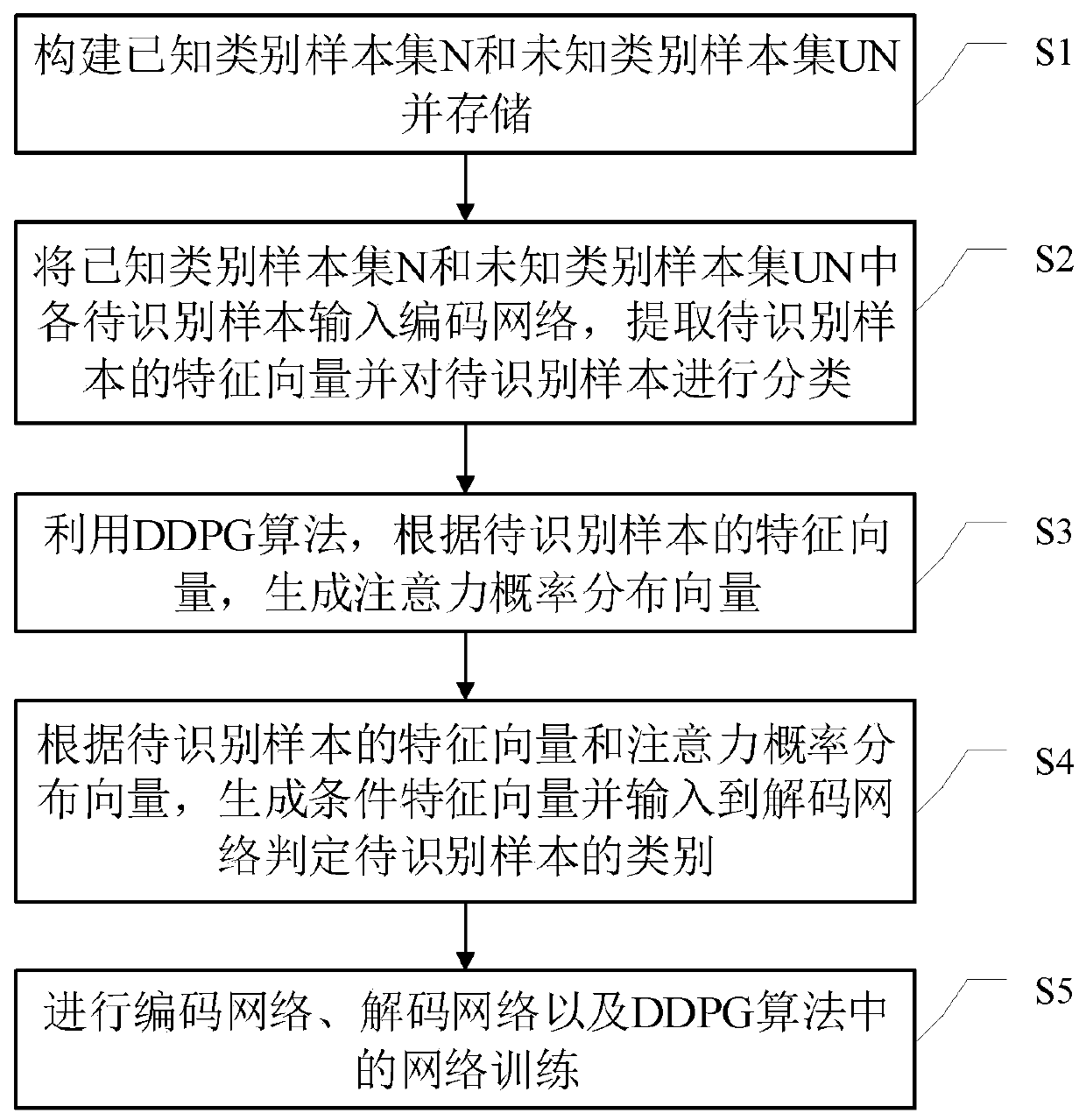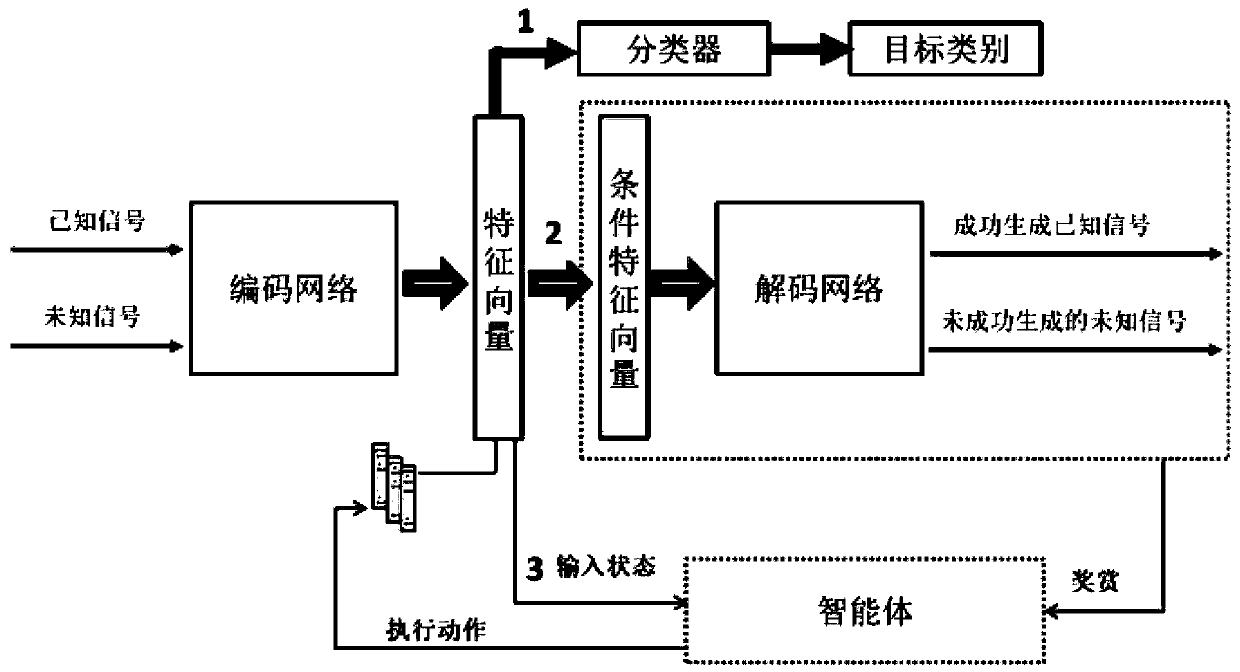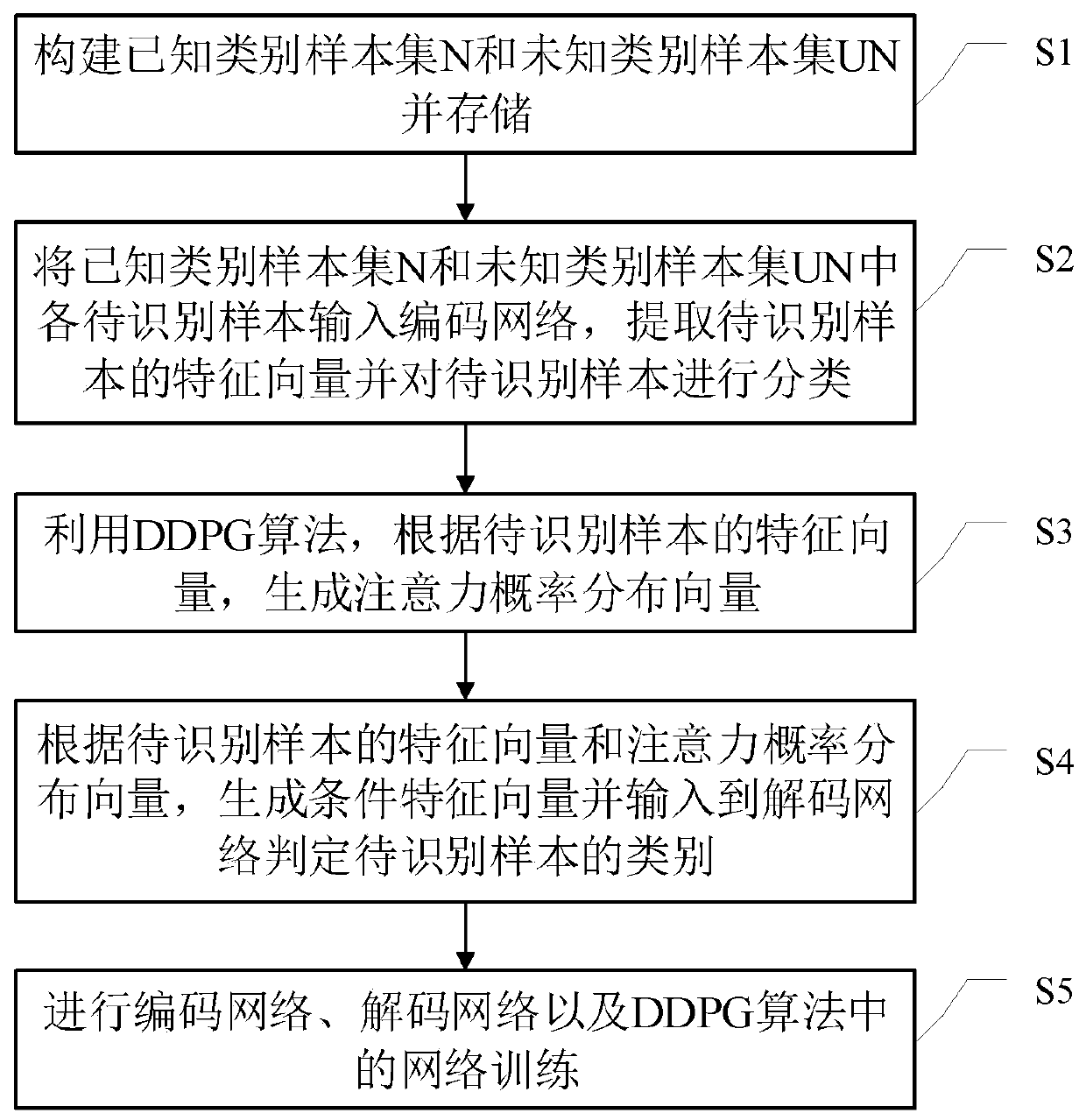Unknown individual identification method and device for radar signals
A radar signal and recognition method technology, applied in character and pattern recognition, instruments, biological neural network models, etc., can solve problems that are difficult to include unknown types, large dependence on unknown samples, and large signal similarity
- Summary
- Abstract
- Description
- Claims
- Application Information
AI Technical Summary
Problems solved by technology
Method used
Image
Examples
Embodiment 1
[0056] Such as figure 1 with figure 2 As shown, a method for identifying unknown individuals of radar signals, the method includes: Step S1: Construct and store a known category sample set N and an unknown category sample set UN, specifically: collect signals from n radars, and divide K The signals of all radars are used as known categories to form a known category sample set N, and the signals of n-K radars are used as unknown categories to form an unknown category sample set UN.
[0057] Step S2: Input the samples to be identified in the sample set of known categories N and the samples to be identified in the sample set of unknown categories UN into the encoding network, extract the feature vectors of the samples to be identified and classify the samples to be identified; Extraction and classification belong to the prior art. The encoding network includes an input layer, an intermediate layer, and an output layer. The input layer inputs samples to be identified. The interm...
Embodiment 2
[0076] Corresponding to Embodiment 1 of the present invention, Embodiment 2 of the present invention also provides a radar signal unknown individual identification device, which includes:
[0077] A sample set building module, used to construct and store a known category sample set N and an unknown category sample set UN;
[0078] The extraction and classification module is used to input each sample to be identified in the sample set of known category N and each sample to be identified in the sample set UN of unknown category to the encoding network, extract the feature vector of the sample to be identified and classify the sample to be identified;
[0079] Vector generation module, for utilizing DDPG algorithm, according to the feature vector of sample to be identified, generates attention probability distribution vector;
[0080] A category determination module is used to generate a conditional feature vector and input it to the decoding network to determine the category of ...
PUM
 Login to View More
Login to View More Abstract
Description
Claims
Application Information
 Login to View More
Login to View More - R&D
- Intellectual Property
- Life Sciences
- Materials
- Tech Scout
- Unparalleled Data Quality
- Higher Quality Content
- 60% Fewer Hallucinations
Browse by: Latest US Patents, China's latest patents, Technical Efficacy Thesaurus, Application Domain, Technology Topic, Popular Technical Reports.
© 2025 PatSnap. All rights reserved.Legal|Privacy policy|Modern Slavery Act Transparency Statement|Sitemap|About US| Contact US: help@patsnap.com



